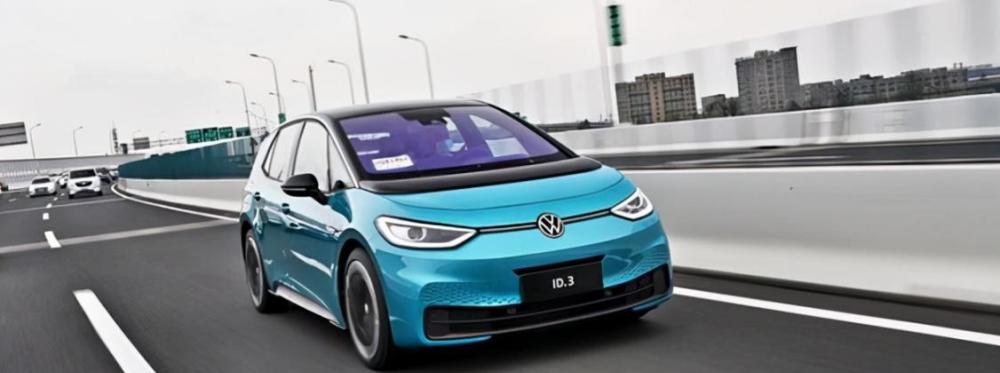Do you drive after the volkswagen?

Don't say that it has been driven, it seems that in my impression, in addition to Phaeton, Volkswagen has not launched a rear-drive model. And because of the size relationship, Xiaobian naively believes that golf and ID.3 will be inextricably linked, but in fact, the MEB platform is not derived from the shoulders of the "giant" of the MQB platform, but is really the product of a new stove, which is why we can see a compact Volkswagen sedan with a rear-drive layout. After all, the internal space of general family cars is scarce, and only models of luxury brands above C level will use the luxury layout form of front-mounted rear-drive, if it is an electric vehicle, there will be no such problem.
The front suspension of the ID.3 is short because it doesn't need to leave room for the engine, while the compact motor layout keeps the two rear wheels as close to the rear as possible. In this way, the A-Class car with a length of less than 4 meters 3 has a cross-class wheelbase of 2765mm. However, the interior space of the ID.3 is not as high as that of the B-class car, after all, the high-end model needs to accommodate 20-inch tires, which will eat up a lot of space in the car, but in the compact car, the internal space of the ID.3 is definitely at the upstream level.
As many people know, rear-drive vehicles have a natural sporty advantage. Because the front wheel, if used as a driving wheel, often lacks the grip used for steering. Since the rear-drive layout is used, will this ID.3 have different steering characteristics from the previous Volkswagen?
We often hear a car critic say "this car is very popular" and "this car is very Toyota", indicating that the brand often has its own adjustment tendency, but this ID.3 is not "Volkswagen". However, the reason for this change in driving characteristics is not due to the change in the drive form, but from the change in weight distribution.
As with many mid-range supercars, the ID.3's center of rotation is uniform because most of the weight is concentrated in the center of the vehicle. Without stepping on the throttle and brakes, it does not have an obvious push head or tail flick in the corner. However, this is a car of more than 1.7 tons after all, coupled with its absolute wheelbase is not long, there is a very obvious center of gravity shift in the acceleration or deceleration stage, so its rear will be more active when tracing brakes; when accelerating out of the corner, the front wheels of the ID.3 will lose a little grip due to the center of gravity moving backwards, resulting in understeering.
In fact, this kind of tuning is still quite fun, although the id.3 does not have the characteristics of a traditional rear-drive car at all, but because of the concentration of weight, it is still easy to maintain the rhythm in the small track. However, as a more home positioning sedan, the ID.3's shock absorber damping is not set too tough, so daily driving will not turn your spine out of the top of your head like a traditional steel cannon, and because of the need to take into account comfort, id.3's steering is not particularly sharp.
Although the MEB platform brings ID.3 a driving experience different from the previous Volkswagen, in the underlying driving logic, Volkswagen still tries to calibrate it to the style of traditional fuel vehicles as much as possible. For example, the "single pedal" driving mode that many new electric forces like is not the default driving mode on ID.3, and its "electric door" response does not have the grumpy feeling of electric vehicles in the public impression, but is closer to the texture of traditional fuel vehicles. After releasing the brakes, the kinetic energy recovery system does not intervene immediately like other electric vehicles, and the motor will only reverse brake after you have stepped on the brakes, until the braking power of the motor reaches the limit (about 12kw), and then it is the turn of the mechanical braking system to intervene. The switch between the two is very gentle and linear, indicating that in order to reduce the learning cost of accustomed fuel owners, Volkswagen has made great efforts in the calibration of the next generation of electric models.
After talking about the driving experience of ID.3, we still have to talk about the difference in thinking between traditional car companies and new power brands in terms of car manufacturing. New power brands tend to highlight the "electric" attributes of electric vehicles, and they will amplify the advantages of vehicles after electrification (such as accelerated response, or coordination between various systems), but this way of building cars also has obvious disadvantages, that is, the cost of learning and the problem of communication between people and vehicles. And traditional car companies like Volkswagen still pay great attention to the inheritance between new and old models, and now the penetration rate of automobile electrification is getting higher and higher, for traditional car companies, it is just the power system from the internal combustion engine to the electric motor, and the standards and processes of car manufacturing have not changed. Even if many systems have changed from mechanical transmission to electric transmission in the past, traditional car companies are still more accustomed to emphasizing the sense of mechanical communication between people and vehicles, and they do not want to highlight the "electric" attributes of vehicles.